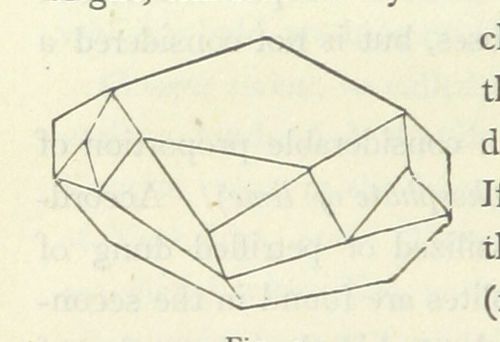Geology is at the heart of our latest Inspired by Flickr contribution. Out of more than 1 million images, field recordist and artist Jez riley French was drawn to a simple line drawing of a piece of chalk, found amongst the pages of the 1883 publication 'The History of a Lump of Chalk, etc' by Alexander Watt F.R.S.A.
I’ve long been fascinated by the musicality of non conventionally ‘musical’ forms: photographic images, the sound of places, objects and species, architecture and, of course, language. I often read, for example, certain poetry for the internal music the words create, often slipping adrift from their literal meaning. So, how could I ignore ‘The History of a Lump of Chalk’ by Alexander Watt - coming across its illustrations whilst browsing the British Library’s Flickr pages, especially as i’ve recently been gathering material, new and from my archives, for a series of pieces entitled ‘dissolves’ and including several recordings of chalk and various minerals in flux.
For me focusing on what is at first an overlooked detail of a locale can always offer up a rich and vast supply of information, inspiration and experience (visual and sonorous). The illustration i’ve selected from the book also appears simple - an academic, technical rendering of a mineral, yet the clear use of line and space offers other possibilities. For me there is a strong analogy here with ‘field recording’ - it is possible to approach it from only a technical outlook / technique, and yet to do so is a kind of poverty - a lack of connection and an intuitive, emotive response. Put simply, listening is more that that, as also a lump of chalk is more than its human chemical categorisation, and a drawing of it can be the line, the ink, the texture and age of the paper - or in the case of a digital archive, the viewing of it is in the context of the time spent exploring and all that it brings.
The small lump of (coombe) chalk used on the accompanying recording was dissolved in east yorkshire. The entire recording is several hours in duration, with the sound eventually becoming thinner and thinner. The section here is from the first 10 minutes of the process.
After you’ve read this and listened to the recording I strongly advise you to download the pdf of Watt’s book - the layout of the cover is worth it alone: though be advised that reading through the pages (or just the glossary for that matter) one can be easily diverted
asparagus stone | babbingtonite | iceland spar | fluor spar | calc-tuff | puzzolene | chaonite | corn brash | oolite | greensand | marl | foraminifera
Words that seem as clear and at the same time as elusive as the materials they refer to.

(coombe) chalk dissolve
A strong advocate of the importance of listening, French encourages an active participation with the recording. To do so reveals a wealth of subtle acoustic effects, otherwise hidden within the seemingly homogeneous sound of the chemical reaction.
As many readers will know, chalk dissolves when placed in certain solutions - for some of us this was first observed during science lessons at school. If only we’d been able to listen to the results as well as see them! At first what appears to be uniform - a chemical reaction, certain and measurable, is in fact an incredible chorus of variables. A slight shift in ones openness to the act of listening and one is transfixed, listening more closely, becoming more and more aware of the different sonic events - some returning and some barely audible just once.
--------------------------------------------------------------------
Using intuitive composition, field recording, improvisation and photography, Jez riley French has been exploring his enjoyment of detail, simplicity and his emotive response to places and situations for the past 3 decades. Alongside solo performances and exhibitions he collaborates with other artists, runs the ‘in place’ project on field recording – a subject on which he also lectures, organizes the ‘seeds & bridges’ event series and runs the ‘engraved glass’ label.
In recent years Jez has been working extensively on recordings of surfaces and architectural spaces, some results of which make up the ‘....audible silence’ project and has also been developing the concept of photographic scores.
His work has been performed, exhibited & published widely, including in France, Austria, Japan, Korea, the Czech Republic, UK and Belgium.